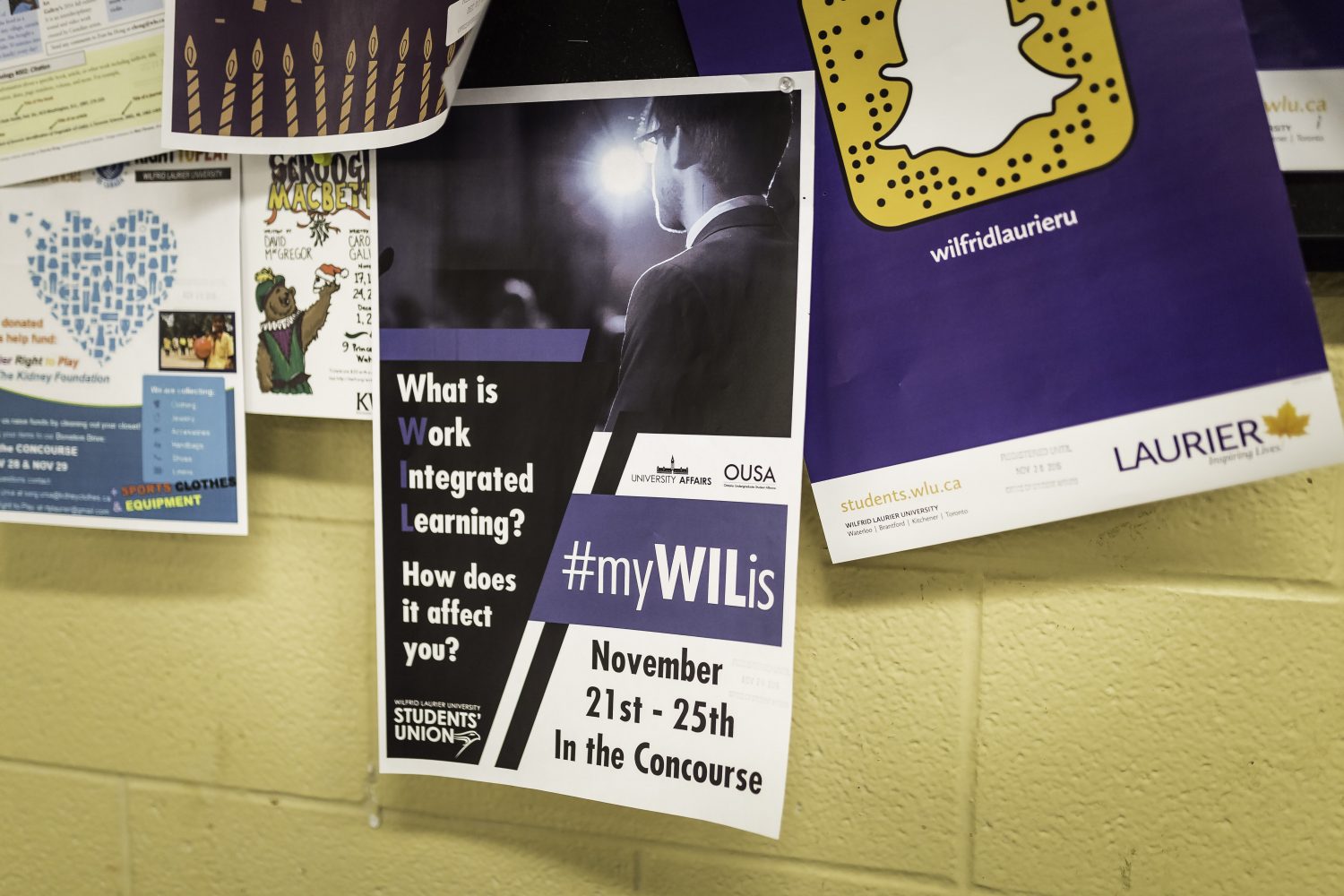OUSA brings #MYWLLis campaign to Laurier


Between Nov. 21 and 25, the Ontario Undergraduate Student Alliance (OUSA) hosted its #MyWILis campaign to raise awareness of work integrated learning and gather student feedback on the topic.
Work integrated learning (WIL) itself, isn’t a commonly used term and means different things to different people.
OUSA defined “WIL” as experiences that help students translate learning into real world scenarios.
The goal of the campaign was to gather feedback from students across Ontario on what WIL meant to them.
Using this feedback, OUSA aims to figure out what students particularly need from the government.
According to the OUSA, 84 per cent of members said that WIL improved their educational experience overall.
Students who participated in WIL performed better than those who did not in areas such as employment rate and full time employment rate.
74 per cent of students who participated in WIL earned over $40,000 per year, compared to only 39 per cent of students who did not participate.
“While having a degree is great and having the letters behind your name helps you get the job … the skills that you can apply to the job are what’s going to make you more competitive. WIL opportunities help students be more able to transfer various skills to the workforce,” said Colin Aitchison, vice-president of Wilfrid Laurier University’s university affairs and steering committee member for OUSA.
The #MyWILis campaign follows the June 23 release of the “Building the Workforce of Tomorrow: A shared Responsibility” report by the Premier Wynne’s newly created Highly Skilled Workforce Expert Panel.
The panel was tasked with developing a strategy to help Ontario’s current and future workforce adapt to a technology-driven knowledge economy.
The panel gave 28 recommendations, including a recommendation that the government of Ontario commit to strengthening and expanding experiential learning opportunities.
Specifically, Ontario should commit to ensuring that every student has at least one experiential learning opportunity by the end of secondary school and another by the time they graduate from post-secondary. Wilfrid Laurier University incorporates WIL opportunities through co-op options and practicums.
“I think [the university] is doing well … if you look at stuff like our co-curricular record, we’re teaching students how to analyze the skills that they learn through various volunteer opportunities and extracurricular activities and how those apply to real life,” Aitchison said.
“So, I think Laurier is taking steps in the right direction. There are always developments to take things one step further, but it’s definitely working well in Laurier, in my opinion.”
During the campaign, there were also exhibits placed in the Concourse and U-Desk on the Waterloo campus and the RCW lobby on the Brantford campus.
While the campaign has since ended, OUSA is still looking for lots of feedback from students on the use of WIL and what WIL means to them.


